Facebook creates communication networks in the stratosphere
- Transfer

About 40% of the world's population has access to the Internet. The main reason why others can’t access the global network is the high cost of infrastructure.
If you imagine a traditional communication system, then its foundation is a tower that transmits radio signals to user devices. To establish communication in this way, mobile operators need to create a complex infrastructure that includes rights to a piece of land, equipment, fiber optic cables / microwave communications and access to power sources.
Using such a system, connecting to the Internet of people from remote or sparsely populated areas can be financially problematic. In such regions, there are much fewer potential customers, and to get to them, you will need an even more complex infrastructure. The situation is complicated, given the fact that one in five is below the poverty line, trying to live on $ 1.25 a day, or even less.
Despite the successful connection of more than 90% of the Earth’s population to 2G networks, an increase of this indicator to 100% using traditional approaches seems unlikely in the near future. In addition, it is worth paying attention to the fact that the investments of providers in the creation of infrastructure are unlikely to pay off.
Connectivity Lab was created on Facebook to see if we can make a difference. We are developing a number of new technologies - including solutions using high-altitude aircraft, satellites, atmospheric optical communication lines [eng. free-space optics] and ground installations - in order to speed up the process of connecting disadvantaged and underdeveloped areas to the Network.
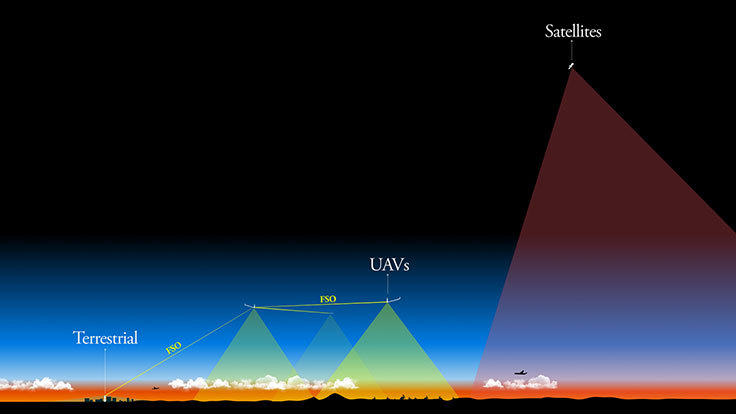
We want these technologies to become the foundation on the basis of which telecom operators, government organizations and other institutions could more efficiently create and use networks in such regions. Today we announced the completion of two critical steps towards the realization of our goal. At the first stage, the construction of the first full-fledged Aquila model was completed - a high-altitude aircraft with a long flight duration, developed by our specialists in the field of aerospace engineering in the UK. Now this model is ready for test flights.
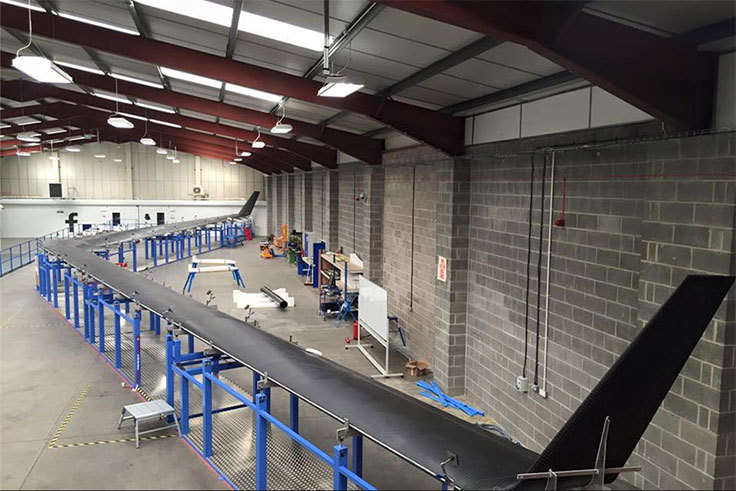
Aquila has the same wingspan as the Boeing 737, but weighs hundreds of times less.
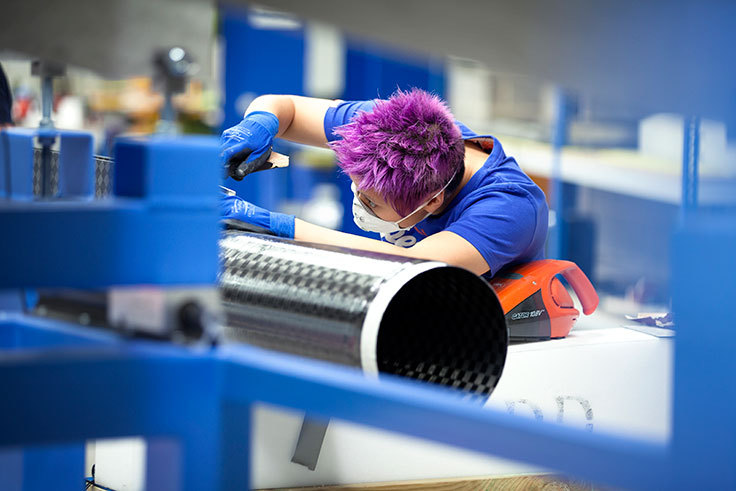
Engineer working on the Aquila UAV.
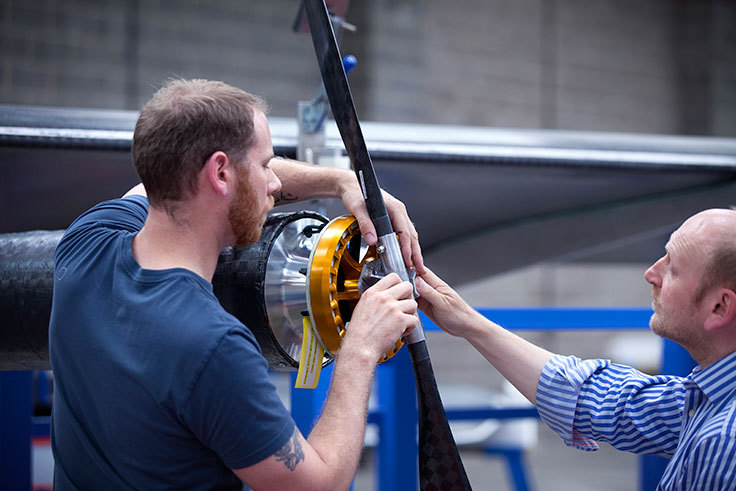
Working with the Aqiula propeller
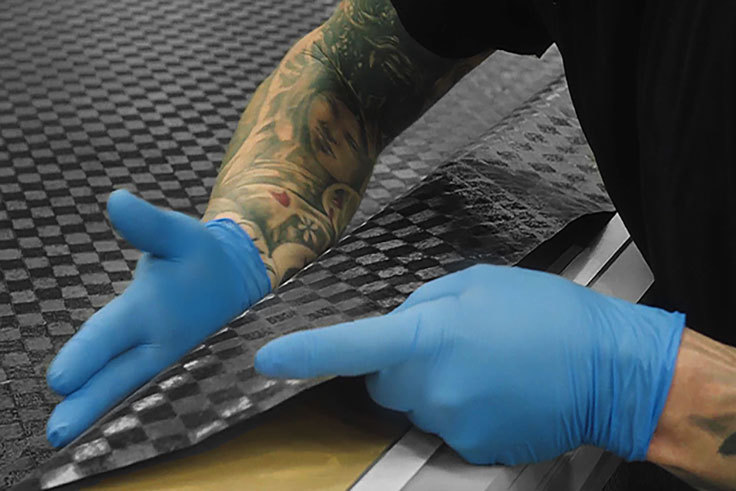
Aquila wings are made of lightweight carbon fiber that remains flexible until cured, but then becomes stronger than steel.
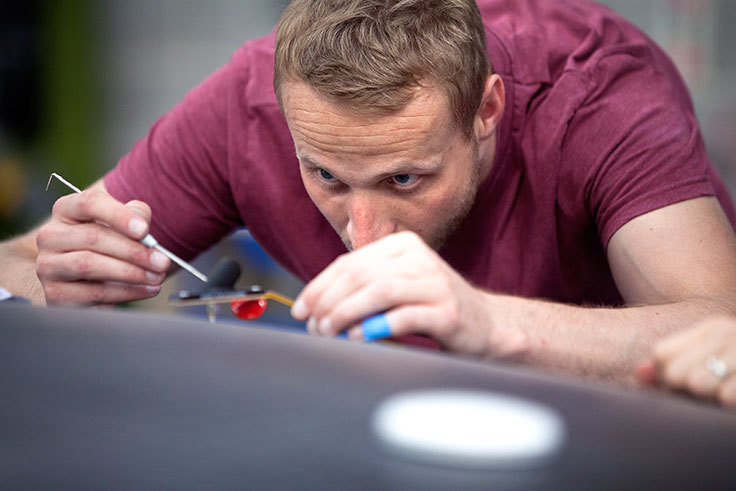
Working with the smallest details
In addition to the Aquila itself, a special design has been created that allows the drone to be in the air for several months. Aquila is powered by solar energy and after launch it will provide communications within a radius of 50 kilometers for 90 days, transmitting a signal to those in this area. Small towers and antennas will receive this signal and convert it into a Wi-Fi or LTE network, to which users can connect using their smartphones and gadgets.
To make this possible, it was necessary to manufacture a truly large and very light aircraft. The Aquila has the same wingspan as the Boeing 737, but weighs 3 times less than a regular electric car. The monoblock design of the wing is made of hardened carbon fiber, the strength of which is higher than that of steel. Prior to curing, the material remains flexible so that it can be shaped to the desired shape.
During the day, Aquila will be located at an altitude of 60,000 to 90,000 feet, where the unit will not be exposed to weather conditions and interfere with air traffic. At this altitude, air is rarefied, and its density is about 5% of the density of air at sea level. In this regard, as a result of the design, wings with a large elongation and a slightly asymmetric aerodynamic profile were made, thereby ensuring optimal aerodynamic quality. During the day, the drone will fly 90,000 feet above the ground in order to fully charge its solar panels. At night, it will fall to 60,000 feet, consuming less power through the use of potential energy of gravitational interaction.
The communication system is located in the very center of the aircraft - in its fuselage. Aquila not only does not need to lay fiber optic cable, but also has the ability to upgrade the embedded system to a specific version that meets the requirements of users.
Earlier this year, tests of smaller versions of the aircraft were conducted in the UK. In the same year, test flights of a full-fledged drone model should begin.
The second important step towards achieving our goal was the successful use of laser communication systems to provide communication between aircraft. Our experts in the field of optical engineering designed and tested optical transceivers with a data transfer rate of several tens of gigabytes per second, outperforming modern technologies by about 10 times. In addition, our team used technologies developed for Facebook data centers that form the basis of traditional fiber optic communications. The resulting throughput was consistent with that found in fiber networks: we are the only ones who can transmit data over the air at such a speed. In the future, we will talk about this technology in more detail.
We are proud of the successes achieved at the current stage. In these short 14 months, we designed and built an aircraft from scratch, and also made great progress in developing the technologies needed to transmit a huge data stream through the air. All these are examples of Facebook’s professional ethics: act quickly and realize your ideas, even if it’s the idea of a high-altitude unmanned aerial vehicle with a long flight duration. Of course, in order to make our dream come true, a lot of work remains to be done, but I am sure that we have the right team that can achieve significant success in fulfilling the mission of Facebook to unite the whole world.
